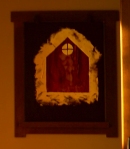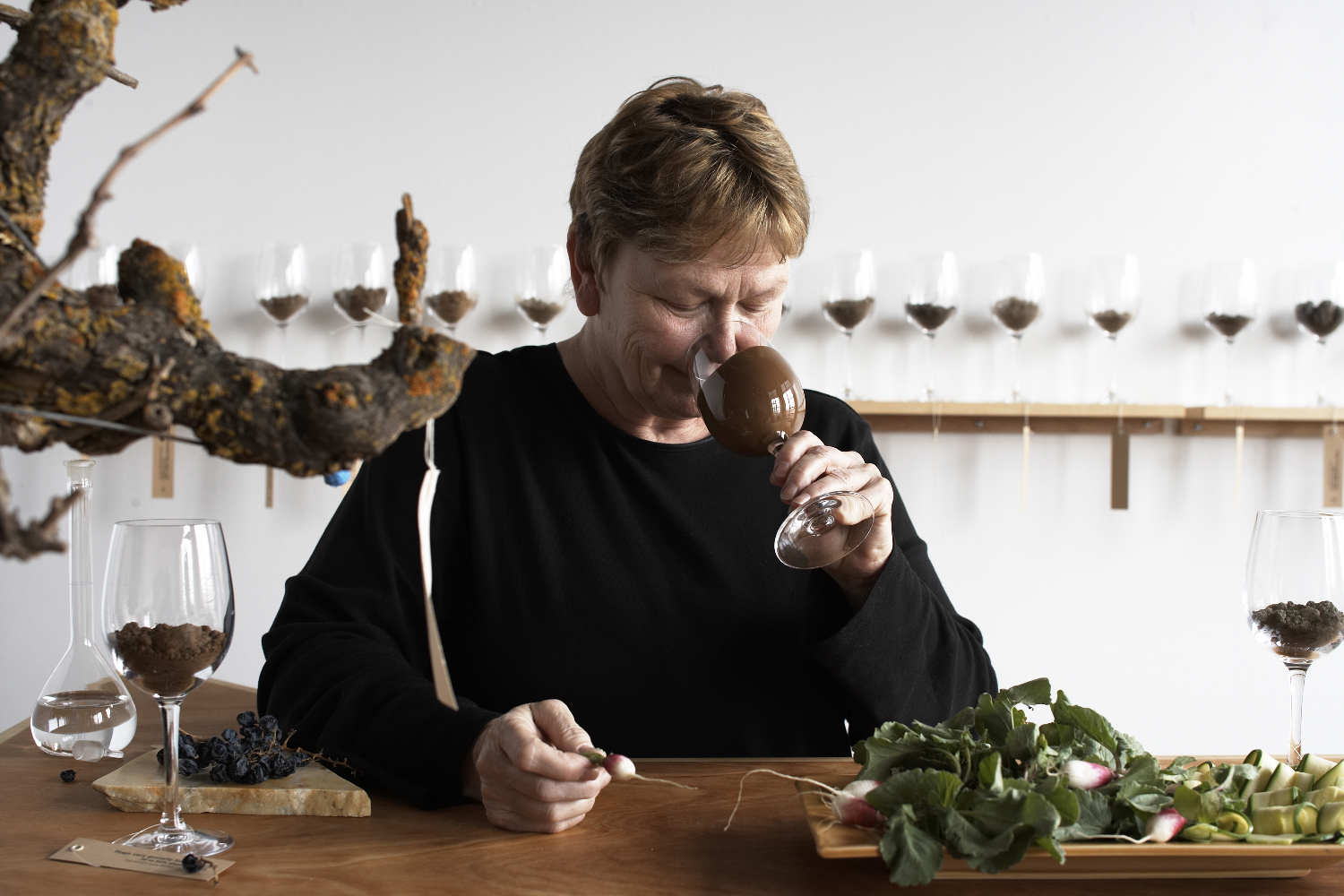(originally posted July 14, 2010)

Seven years ago, the day before we opened Barndiva for the very first time, we hosted an unforgettable interactive art exhibit celebrating the work of ten renowned local food producers. Each food artist was paired with two other artists: one to document their work, the other to interpret it. The interactive part was that we invited guests to “eat the art” while they experienced it. 300 old friends, new neighbors, journalists, vintners, and tout Healdsburg descended upon the barn on a warm and sunny Saturday in July expecting to be wowed. We wowed them. Who could resist the heady perfume of art, food, wine and music, all served up in a beautiful new building on a perfect evening at the height of summer?
The entire day was our business plan writ large, with the central proposition that diva’s don’t just live in opera houses. When it comes to food there are people who hit the high notes every day of their lives in vegetables fields, olive orchards, dairies, bakeries... even restaurants shaped like barns. There was a sense that day, articulated by almost everyone who was here, that something exciting was gaining momentum in Healdsburg; that Barndiva was only part of a zeitgeist that was happening in our town, and towns like ours (which admittedly is not many) across the country. The term ‘farm to table’ didn’t mean what it does today; the concept of ‘artisan’ had only recently begun being applied to something you’d find on a plate in a restaurant. The adoration we lavished on our food savants felt new and exciting, an homage to hand made and home grown that felt wholly warranted and fully our own.
It was the greatest opening party Barndiva could have imagined. Of course we needed the good will, inexperienced as we were, to get through that first tumultuous year. And we were thrilled to have pulled off an exhibit of such great complexity to launch our business. But what we were most proud of was the $16,000 we helped raise with Slow Food Sonoma County, our partners for the event, to be spent on a program that would bring sustainable farmers to the kitchen doors of Healdsburg Public Schools to provide for their lunch programs.
 And so it went, with virtually every collaborative exhibit: Lou Preston’s wine was exhibited alongside Susan Preston’s installation piece of a single worn blue kitchen chair sitting, as if floating, on a mound of flour with a jug of their Guadagni on the floor. Ig Vella brought huge rounds of cheese and a lifetime’s worth of craft in his worn and irascible smile. Elissa Rubin Mahon stacked a dozen of her jams in an old wood box by the front door where they sparkled like jewels in a Bulgari window. John Scharffenberger sent slabs of different grades of chocolate and huge bags of chocolate nibs which we poured on a wine barrel below Michael Recchiuti’s accompanying ‘canvas’ of hand poured chocolate upon which he had painted a shimmering, incandescent barn. The smells of Olive Oil and Honey and Bread and Peaches ~ all other exhibits ~ filled the air, mingling with the laughter and music and talktalktalk.
And so it went, with virtually every collaborative exhibit: Lou Preston’s wine was exhibited alongside Susan Preston’s installation piece of a single worn blue kitchen chair sitting, as if floating, on a mound of flour with a jug of their Guadagni on the floor. Ig Vella brought huge rounds of cheese and a lifetime’s worth of craft in his worn and irascible smile. Elissa Rubin Mahon stacked a dozen of her jams in an old wood box by the front door where they sparkled like jewels in a Bulgari window. John Scharffenberger sent slabs of different grades of chocolate and huge bags of chocolate nibs which we poured on a wine barrel below Michael Recchiuti’s accompanying ‘canvas’ of hand poured chocolate upon which he had painted a shimmering, incandescent barn. The smells of Olive Oil and Honey and Bread and Peaches ~ all other exhibits ~ filled the air, mingling with the laughter and music and talktalktalk.Karen has chosen the artist Laura Parker to document her work and towards that end Laura has spent many hours at the farm that spring photographing apple trees in full blossom. She then transferred 55 images onto fabric panels that on the morning of the exhibit she slung across the entire rear of the barn. It was a gorgeous body of work. Remarkably, she’d taken an inherently flat, captured image and given it back the life it once had out in the fields. Karen and Laura are good friends, which you could tell from the way their pieces played together. There was also something wonderfully incongruous between the mothership starter floating in a huge glass bowl of rust colored cider, and these ethereal blossoms, splashing sunlit patterns through the air, moving like a curious school of butterflies, hovering, but with no intention of landing.
Laura and I connected that day, talked briefly, then lost touch, except for infrequent emails about our respective openings. From hers I gleaned that she was mixing up her time between fine art, highly sought after pastel images of fruit and vegetables (presently on exhibit in Studio Barndiva), and interactive work which sounded more experiential than performance. It wasn’t until she sent something about a new project called Taste of Place that I started playing closer attention.
Taking the current interest in terroir out of the vineyard and bringing it to the farm, Laura was making the case that everything we eat, not just wine we drink, has a indelible fingerprint connecting it with the soil it is grown in. She visited farms and tramped around, meticulously labeling soil samples, which she then put into wine glasses for folks to smell and discuss. She only used dirt from sustainable farms (fyi: soil becomes dirt when you take it away from where you find it). She didn’t ask anyone to taste the dirt (though some did) but she made the case that by smelling deeply we are in fact tasting: scientifically that’s what happens on the sides of our tongues when we salivate, the result when something piquant ~ in this case dirt with a little water added ~ hits our olfactory senses. What she found from the first few interactive shows was that often just the smell of dirt played a strange alchemy on memory. It can bring back a moment in time when we were very young, before dirt was just something to wash off. Sound implausible? Maybe, but this is exactly what happened to Geoffrey at the Taste of Place lunch Laura put on at the Boonville Hotel in 2008.
I have a long history with the Boonville Hotel: I was among the second round of investors when the restaurant was in its glory, and it provided my first real connection to Anderson Valley. Ironically, given what I do now, it also exposed me to a style of country dining I’d only ever seen in Europe, where it’s not unusual to see some of the food you are eating growing or frolicking in the fields beyond the dining room windows. The hotel is now owned by Johnny Schmitt, Karen’s brother, a wonderful cook who had worked with Laura and her farmers to create a soil-paired meal I had no intention of missing. My husband thought otherwise. On the day of the lunch, with temperatures already climbing over 80, it was all I could do to get him in the car.
The first thing that strikes you when you experience Laura’s Taste of Place is how different the soils look when you are able to study and compare them, side-by-side. Some soils are deep and rich, while others look almost too thin to support growth of any kind. Some are rocky, with bits of granite, some smooth as silt, several so light and airy they seem to be crawling up the sides of the glass.
There are two ways of describing what happens after that. The first is to take a page out of wine Terroir vernacular (albeit tongue and cheek) as indicated from crib notes Laura and Karen wrote about the Philo Apple Farm.
Philo Apple Farm – Flood Plain, Navarro River District. Unlike the Indian Camp Ground variety, flood plain has a yellow mustard color. It's texture is hard and clod like. A bit less exotic in aroma, but more varietal, with olive and mineral notes, and a bit weightier finish. The nose here is clay and smoky with huge extract and extraordinary elegance.
Then there is the way Geoffrey experienced Taste. First he stuck his long aquiline nose into a glass of “Indian Campground: Arrowhead Reserve” and inhaled deeply. Then he furrowed his brow, closed his eyes, sighed. “This brings me right back to our coal cellar in London when I was 5." He looked up at Laura and smiled. “It’s the smell of anthracite and moisture. God, I spent hours playing down there, with this smell in the air.” Later, in the car on the way up to the farm he remarked that he hadn’t thought about those years for a long, long time.
It is amazing to me, and quite wonderful indeed, that after seven years we are still talking about the sanctity of the soil here at Barndiva. Since Ryan arrived the idea behind “eat the view” has taken on even greater meaning. It’s not just a nifty tag line for our patrons anymore, but embedded deep within their enjoyment of everything we surround them with here at the Barn. With inspired cooking, as with bio-dynamic farming, it's hard to know where the passion ends and the science begins. A growing part of me feels we may be seeing the beginning of a thoughtful re-consideration of why food tastes the way it does, which could even lead us to a reappraisal of the very concept of nourishment. There is now talk about Secondary Metabolites in plants which, while they have probably been around since the beginning of time, are only now being studied for the possible secrets they hold in protecting the plants that produce them. If we are ever able to unlock that connection, they may someday be able protect us as well.
These are exciting times to be considering taste and how it applies to farming practices and food. What’s most incredible is the fact that this new frontier has been here all along, where it’s always been, right beneath our feet.
If you missed our opening party seven years ago, now is your chance to share an historical evening at Barndiva. If you were here for The Taste of Art, thank you for your continued patronage. We hope to share A Taste of Place with you in August.










